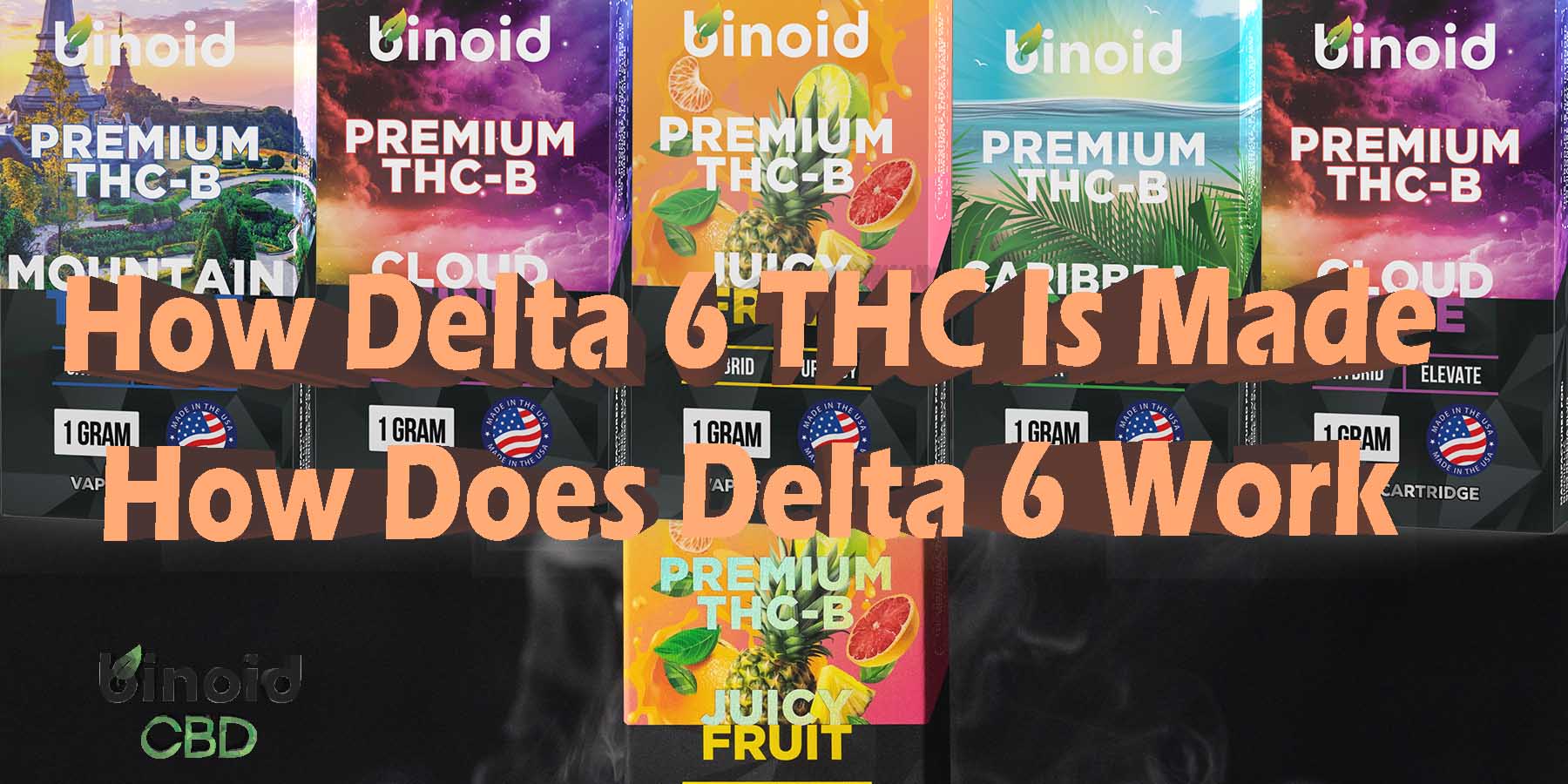
How is Delta 6 THC Made?
Delta 6 THC hasn’t yet fully arrived on the market, but it’s on its way, and you’ll be trying this new cannabinoid for yourself in no time. Not to be confused with delta 6a10a, which is also called “delta 3 THC”, delta 6 is a super minor cannabinoid in the hemp plant, but thanks to advancements within the cannabis industry over the last several years, companies are able to make effective, authentic delta 6 products.
Let’s look at the process of making these products, so you know exactly what goes into the formula you may very well end up buying soon.
To buy Delta 6 THC Products Click Here
What is Delta 6 THC?
Delta 6-tetrahydrocannabinol (delta 6 THC) is a naturally occurring, super minor cannabinoid in cannabis, both in hemp and marijuana. And, it’s also one of the most mysterious cannabinoids, as we know almost nothing about it. One study was done in 2018 that showed that delta 6 may have anti-inflammatory and anxiolytic effects, which is something we associate with many cannabinoids. Otherwise, we don’t know about the nuance of it chemical structure, its potential benefits, or even if it’s psychoactive.
The Process of Making Delta 6 THC
Like we said, delta 6-tetrahydrocannabinol is a minor cannabinoid in hemp, and so it’s not a cannabinoid that was invented in a lab, like THC-O-Acetate (THC-O). Still, because delta 6 THC strictly exists in trace levels, manufacturers/companies have to use alternative methods to mass-produce delta 6 products more efficiently.
Let’s walk you through all of the steps involved in crafting a delta 6 product.
#1: Sourcing the Best Hemp Available
Hemp products all begin with the raw hemp plant, and finding the best-quality hemp possible is therefore essential. A company should, ideally, strive to seek out raw hemp that comes from a local farm, as the less it travels, the better. Besides that, hemp farms in the United States are maintained under stricter standards than they are in many other countries, which yields a higher-quality Delta 6 THC product.
On top of that, it’s best if the hemp is grown organically – in other words, grown according to the strict United States Department of Agriculture (USDA) standards for organic agriculture. This means that the hemp contains zero pesticides or other known environmental toxins, and that it better retains its chemical composition as a result of zero exposure to toxic farming chemicals.
#2: Creating the Delta 6 Distillate
All delta 6 products are made with delta 6 distillate – a pure extract of the cannabinoid, that can be infused into basically any product form. Now, because delta 6 is such a trace cannabinoid, the amount of raw hemp material needed to produce a meaningful amount of distillate would be astounding, and anything but cost-efficient. So, instead, companies use a process called isomerization, which is the same process used to make delta 8 products, THC-P products, and so on.
Isomerization relies on the fact that all cannabinoids originate from CBG (cannabigerol), and so they all share the same chemical composition, with their atoms simply arranged in a different way. You can take CBD, the cannabinoid in hemp that dominates its chemical composition, and rearrange its atoms to convert it into delta 6. And, that’s exactly how delta 6 THC products will be made.
To create a purified delta 6 extract, a distillate is produced, which involves pushing steam through the material at varying temperatures and pressures to eliminate the unwanted compounds, leaving behind almost 100% delta 6 THC.
#3: Making Different Delta 6 Products
Now that we have delta 6 distillate at our disposal, it’s time to formulate some products. Gummies, vape oils, tinctures, concentrates, and even delta 6 flower will all contain this extract, blended with ingredients, of course. Keep in mind that some companies may also sell pure delta 6 THC distillate, which again is simply the purified extract of the cannabinoid, which is flavorless and odorless.
When delta 6 THC does eventually make its way onto the market in a more impactful manner, you can expect it to arrive in product forms like:
- Pre-filled vape cartridges (vape carts)
- Disposable vape pens
- Edibles
- Dabs/concentrates
- Tinctures
#4: Third-Party Testing
Now comes a step that’s absolutely essential, which is third-party testing. Once a delta 6 product has been produced, the manufacturer must send it off to a state-licensed third-party laboratory, where it’s tested for safety, purity, potency, and federal compliance. These lab reports are then given back to the manufacturer, and should be displayed on their website, to offer consumers a means to verify that they’re buying the best-quality Delta 6 THC product possible.
#5: Packaging
Finally, it’s time to package the delta 6 THC product, which requires more effort than you may think. For one thing, as we’re working with organic compounds, we need to make sure that the packaging is airtight, as oxygen can cause the cannabinoid to break down and lose its potency before it’s even in the hands of a customer. The packaging should also provide information about what the product is, the ingredients, and how to take the product for the best results, including the ideal dosage amount.
Making Delta 6 THC: A Fascinating Process from Beginning to End
Again, even though delta 6 THC isn’t widely available just yet, that doesn’t mean companies like Binoid are busy behind the scenes, getting ready to formulate and launch lines of products that allow hemp enthusiasts to explore this cannabinoid for themselves.
And, as you can see, the process of making delta 6 products isn’t really different from making other hemp products that many of us are used to taking. So, stay tuned, because before long, you’ll be able to see what this cannabinoid can do for you.

